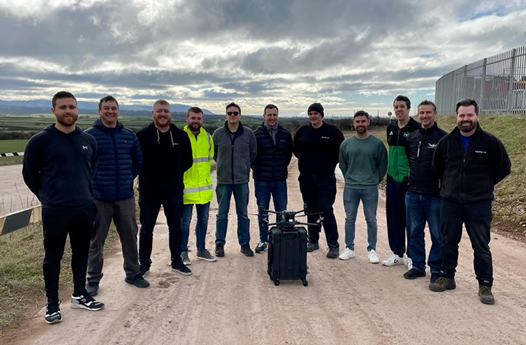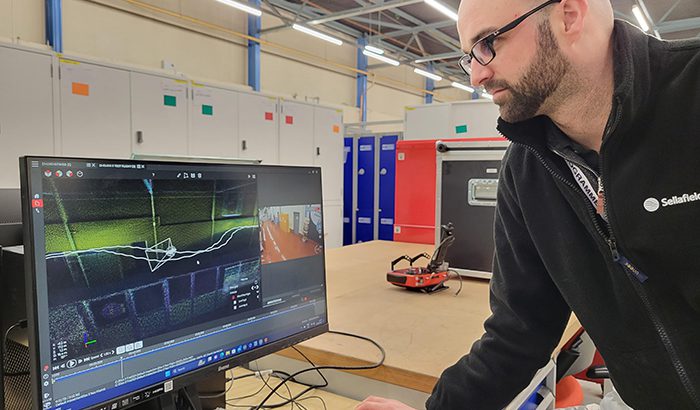Photo above – Sam Jay, UAV Engineer and Chief Pilot at Sellafield Engineering Centre of Excellence, looking at the screen display of the mapping images captured by the Flyability Elios 3 drone.
A UK technology first is taking place this month thanks to a pioneering drone team. UAV pilots from Sellafield Ltd’s Engineering Centre of Excellence will fly the first UAV fitted with Lidar sensors at a UK nuclear site. The team based at Cleator Moor in Cumbria will fly the Swiss-made Flyability Elios 3 as part of a decommissioning program at the site.
The UAV is capable of carrying the latest Lidar technology, creating 3D visualization which gives the pilot full situational awareness while flying the drone. The images are also stored for 3D mapping reference, data which can be output for design work and for decommissioning, providing vital information on the physical characterization of cells.

The quadcopter, which uses ducted propellers, can be used to fly in hazardous environments such as active cells, taking away the need to involve humans in those areas.
Sam Jay, UAV Engineer and Chief Pilot at Sellafield Engineering Centre of Excellence, said: “We are going to be able to model an area of the site that people have not been into before.”
Peter King, Technical Specialist at the Centre of Excellence, said: “The technology we are using will enable us to understand decommissioning requirements for inaccessible areas. “It will enable us to carry out a high quality inspection, changing aspects of decommissioning, enabling us to characterize areas without putting people into those environments.”
The drone is able to operate in complete darkness with specialist thermal cameras and oblique lighting, inside full concrete cells and at a distance of up to 500 meters from an operator.
The technology has already been used in the USA, but this month will be the first time it has been used at a nuclear site in the UK.

The UAV team at Sellafield Engineering Centre of Excellence are well known across the industry for setting the standard in safe use of drones at UK nuclear sites.
Meanwhile more than 250 staff members at Sellafield answered the call to gain new skills in drone technology in order to support an out of hours UAV Emergency Duty Team (EDT).
Ten prospective UAV pilots were chosen from the applicants to undergo specialist training. They recently completed their General Visual line of Sight Certificate (GVC). “The amount of interest we had for the roles has been outstanding,” said Amanda Smith, Sellafield’s UAV Equipment Program Lead.
The cohort are now undergoing further training from the UAV team’s base at the Engineering Centre of Excellence. It is hoped that they will join the rota by the end of summer. Amanda said: “Having more pilots trained means we can provide eyes in the sky quickly, delivering important information to enable informed decisions to be made. “It’s great that so many of our Sellafield colleagues want to be on the emergency rota and are so committed to keeping our community safe.”



